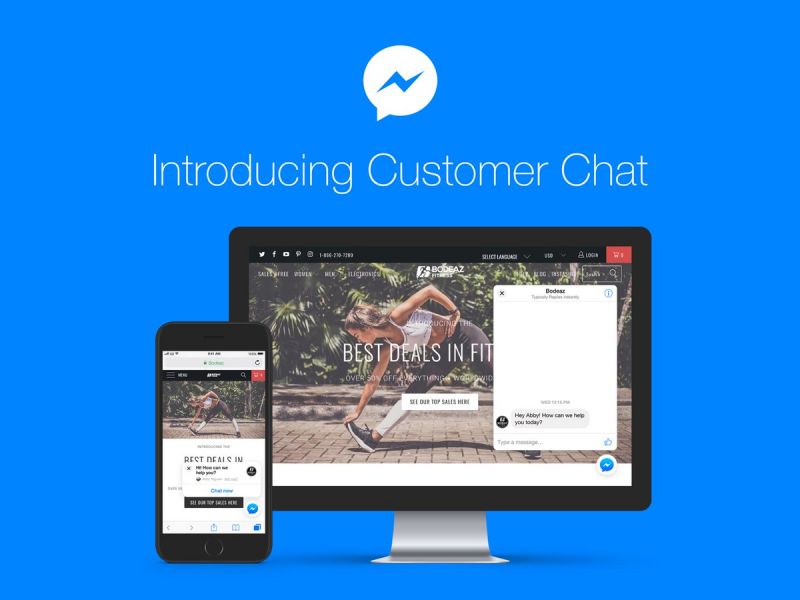New Delhi: In a bid to appeal to the developer and business community, instant messaging platform Messenger rolled out its version Messenger 2.2, helping developers and businesses reach their customers in new and engaging ways, improve the quality of their messaging experiences and make it easier to build and iterate on the platform.
In a blog written by the team, Messenger revealed that the move was taken after extensive feedback that was received from the aforementioned target audience regarding the usage of the platform for official purposes.
“As businesses continue to use the Messenger Platform to build experiences that facilitate connection with customers, we’ve been working hard to make it easier than ever to improve these interactions and ultimately drive results. One of our most highly requested features is the ability to extend Messenger experiences onto a business’s website. We are happy to announce the release of the customer chat plugin in closed beta,” it said.
The new and improved version consists of a customer chat plugin, using which people can chat with businesses on their websites and on either of the versions of Messenger (web, mobile or tablet) and transition back and forth seamlessly without losing the conversation’s history and context. This makes it easier for customers to continue the conversation with a business as per convenience.
“In addition to extending the conversation across multiple surfaces, the customer chat plugin supports current platform capabilities such as payments, NLP, rich media and more. To ensure the Messenger web experience is as feature-rich as the Messenger App, we will continue to add new capabilities as the Platform expands,” the blog noted.
In order to make image and video sharing more interactive, Messenger also released a media template, which allows businesses to attach a CTA button when sending videos, images and gifs, or when sharing content from the web view. The template also supports FB URLs. Previously, businesses could only send media as standalone items. By attaching a button, businesses can now include user actions like a share button to the video/image and increase engagement.
“We are also releasing the Broadcast API in open beta, which gives businesses with the pages_messaging_subscriptions permission the ability to send messages to multiple subscribers with a single API request. For example, a news publisher might use the Broadcast API to send breaking news alerts to all their subscribers, or use custom labels to send game-score alerts to sports fans who follow a specific team,” the blog added.
Further, businesses can now see how people rated their Messenger experience by simply clicking on Page Settings>Messenger. This is particularly helpful for businesses that have multiple service providers powering their Messenger experience as the feature aggregates all feedback in one place.
In July, the developers of the platform had launched a built-in NLP in July as a simple way to automatically detect meaning and context in every text message that a person sends, before it gets passed to a business’s bot. With the new update, the feature is now available in Chinese, Dutch, French, German, Italian, Polish, Portuguese, Romanian, Spanish and Vietnamese.
Other features launched include:
Handover Protocol: Launched in beta this past April, Handover Protocol enables multiple Facebook apps to collaborate on the Messenger Platform to enable a better chat experience between people and businesses. Handover Protocol is now available globally, and offers integration with businesses’ Page inboxes, including prior versions.
Page Insights API: This is a programmatic way to retrieve a number of metrics that are also available in a business’s Page management console, including the number of messages delivered per broadcast ID.
Messaging type flag requirement: The “messaging_type” property is required in all requests to the send API. This property identifies the messaging type for the message being sent. This is a more explicit way to ensure developers and businesses are complying with policies for specific messaging types and respecting people’s preferences.
New Message Tags:
Application update: Notify the message recipient of an update on the status of an application (e.g. a job application)
Pairing update: Notify the message recipient that a pairing has been identified based on the recipient’s prior request (e.g. a parking spot is available)
Send sponsored messages via a Messenger Platform API: A new API endpoint that allows you to send sponsored messages with a single API request. Businesses may also continue to buy sponsored messages via the Marketing API.
–ANI

